
THE WHOLE HISTORY OF MY LIFE
marcus pinn
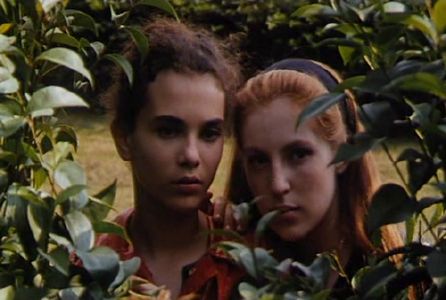
U.S. GO HOME (page 2)
By the last third of U.S. Go Home, all the supporting characters go away and we're left with just Martine (Houri) and Captain Brown (Gallo). For a young first-time actress, you'd think Houri would be intimidated by a person like Gallo, but you'd never know that from their on-screen chemistry. Houri goes toe-to-toe with Gallo and their relationship essentially embodies what the film is about. U.S. Go Home is, in my opinion, a mild feminist film for young girls curious about sex and looking to not feel shame about it. The dynamic of sex and the loss of virginity between young men and young women in film (and in real life) is very unbalanced. Young girls are always shown to be on the shitty end of having sex for the first time. There's always a focus on the young male popping his cherry and becoming a man while females have something "taken away" from them (think back to the scene in The Last Picture Show when Cybil Shepard gives it up to Clu Gullagher). Whether she means to or not, Claire destroys this notion and shows her young female protagonist taking sex (from a much older man) and actually enjoying it instead of feeling shame or embarrassment, which is often put on young women when they have sex for the first time.
The final moments of the film play right into the title. Once Martine is finished having sex, she has no more use for Captain Brown and sends him on his way like men so often do in films when they're done having sex with a woman. It's as if Martine is saying "Ok (U.S.) I got what I want from you. You can go (Home) now." Because Martine is such a young character it makes the message of the film even more profound given that she takes control of the situation over an adult. How many films can you all think of that show a non-femme fetale/villainous young girl essentially dominating a grown man before, during and after sex? Sure, Denis chose an illegal age for Martine and Marlene, but if an underage character like Finch (American Pie) can have sex with an older woman or a technically 13-year-old Tom Hanks can have sex with an adult Elizabeth Perkins (Big) then U.S. Go Home is fine with me.
At the end of the day, no 14-year-old should be having sex but if it's accepted for young males to do so in film, then there shouldn't be so much shame and embarrassment put on teen girls either.
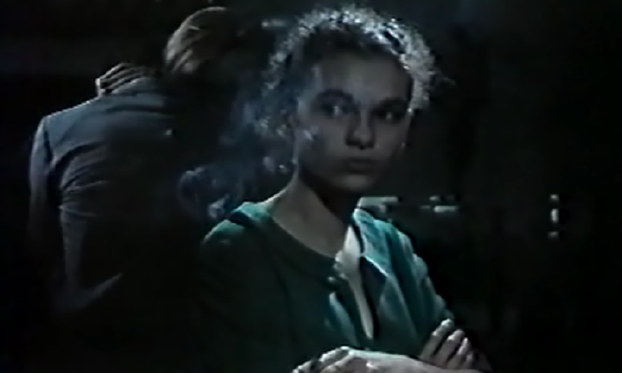
I've always been a sucker for a good coming of age story. No matter how awkward and embarrassing my early teens may have been, I still look back on all of it with a smile. Junior High is a period that usually gets overlooked in cinema, yet that period plays such an important role in shaping who we are. I often give Todd Solondz a lot of credit for taking on that awkward middle school period with Welcome to the Dollhouse in an era when filmmakers weren't showing real kids in their early teens. But U.S. Go Home kind of predates Dollhouse without all the quirkiness that's gone on to negatively influence modern indie cinema over the years.*
U.S. Go Home was also where Claire Denis officially found her style.** That's not to say Chocolat and No Fear No Die (Claire's first two features, respectively) are just "ok." Hardly. Especially in the case of No Fear No Die. It's just that many of the signature shots we see in her later films came directly from U.S. Go Home, which was also one of her first films where she really started to apply the idea of getting something across to an audience through a hint or implication rather than completely spelling something out. Besides people like Haneke (The Seventh Continent), Carlos Reygadas (Japon), Lucrecia Martel (La Cienaga) and maybe Mike Leigh (Bleak Moments), I can’t think of too many great modern/active filmmakers who found their signature style on their first try. There was a period in time when my blog seemed to be exclusively dedicated to Denis' work, so she holds a special place in my heart. Had I not written a brief review of U.S. Go Home on my site years ago, Alice Houri would have never come across it, she would have never contacted me (which eventually led to us becoming buddies) and she would have never eventually put Claire and I in touch with each other.
Speaking to and eventually meeting Claire was an almost four-year ordeal of me chickening out over and over until finally getting the chance to meet her in what was probably one of the most awkward and uncomfortable exchanges in my life.
I had plenty of chances in the past to just walk up to her, introduce myself as a fan, shake her hand and simply walk away but I just couldn't do it. Between 2009-2010, I stood about 10 feet away from her on three separate occasions (once at the New York Film Festival in 2009 and twice at The IFC Center in 2010) but I couldn't muster up the courage to tell her how great I think she is. For some strange reason, she's incredibly intimidating to me. "She's very funny and nice," claimed Alice on numerous occasions. But from my perspective (which only came from reading interviews and listening to director's commentary tracks) she was a serious, intense, raspy-voiced French auteur who takes everything serious.
After two years, Alice put Claire and I in touch with each other so I could get an interview for my blog. After speaking with her, I can now confirm that Claire is very funny, nice, extremely upbeat and has a sort of intentional self-depreciating humor about her work. When we spoke on the phone I could tell she sensed the nervousness in my voice because she kept making jokes in an effort to lighten the mood (we seriously talked about the weather for 5 minutes). After our phone conversation and subsequent interview, I figured that was it. Our correspondence would come to end. But to my surprise Claire and I emailed each other on & off last year between March leading up to the NYFF screening of Bastards in October.
Talking to her on the phone was one thing, but meeting her in person was something else...
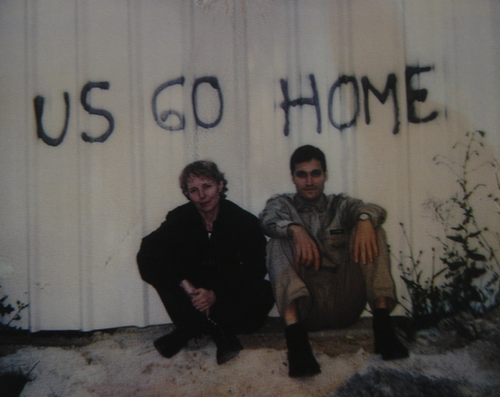
After the screening of Bastards, which left the remaining viewers annoyed and perplexed, I waited for Claire, like a stalker, after the Q & A she gave so I could introduce myself in person. I mean she did an interview for my blog and we have a mutual friend in the form of Alice Houri. I had no expectations upon meeting her. I just thought it would be nice to say hi given that we were both in the same building and had built up a correspondence over the last few months.
As I waited for her to come out of whatever back room she was in, the Lincoln Center was now almost completely empty minus the security guards, my girlfriend and I, and a small entourage of Claire's friends who were also waiting for her. And this wasn't just any entourage: the group of people standing directly across from me waiting for Claire was made up of Jim Jarmusch, Kim Gordon (formerly of Sonic Youth) and Isaach De Bankole.*** These were all figures responsible for creating art that played a part in shaping who I am today.
For those that don't know, before Denis made her feature directorial debut in 1989, she worked as an assistant director for Jarmusch on Down by Law. Plus, both Denis and Jarmusch were essentially mentored/befriended by Wim Wenders in the 80's. Denis worked for Wenders as an assistant on Paris Texas and Wings of Desire while Jarmusch was given film by Wenders to expand Stranger Than Paradise (the next film in this series) into a feature length film. So there's a decade's worth of history between Denis and Jarmusch alone.
Sonic Youth's music has been in my headphones steadily since the 7th grade. As I already established in previous entries, I grew up in Amherst, Massachusetts, which is the hometown of Dinosaur Jr. who are best buds/frequent collaborators of Sonic Youth. Kim Gordon and Thurston Moore also used to own a book store one town over from Amherst. So Kim Gordon's presence was constant throughout my life.
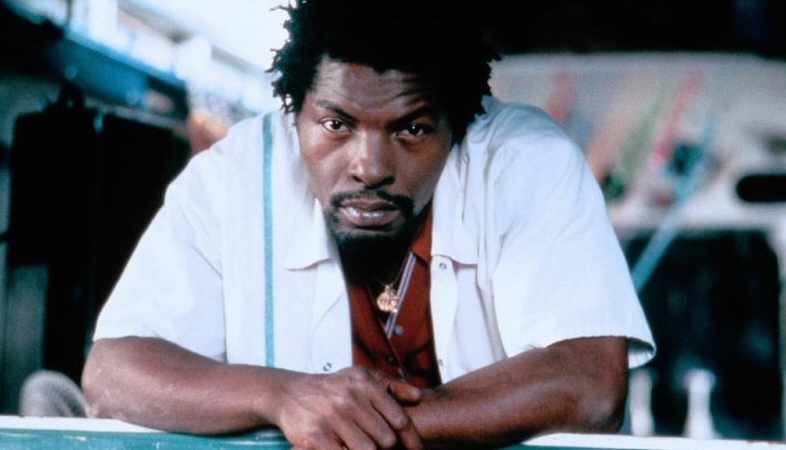
Isaach De Bankole's work in Claire Denis films is iconic, but he's also the co-star of one of my all-time favorite films: Ghost Dog, directed by Jim Jarmusch and shot by Wim Wenders' cinematographer Robby Müller. And to make the web-like/tree branch connection between everyone even stronger, Stranger Than Paradise was the acting debut of Richard Edson, Sonic Youth's original drummer. Edson also co-starred in Do the Right Thing, which was directed by Spike Lee, who threatened Wim Wenders with a baseball bat at Cannes in 1989, which was the same year that Mystery Train (Jarmusch's fourth feature, also shot by Müller) debuted at the very same festival.
Anyway, when Claire finally came out, Jim and the gang immediately walked over to her - at that point I was ready to go. I felt like a cross between a stalker (as I already established) and a fanboy. I suggested to my girlfriend that we leave, but she encouraged me to just go over and quickly introduce myself. So I made my way over and weaseled into this circle of artists I've admired since junior high to say hi. At first Claire must have thought I was just a random fan (which I guess I kind of am at the end of the day) but I quickly let her know who I was and her demeanor changed (not like there was a problem in her demeanor before). She looked genuinely pleased to meet me, but in a moment that felt like 10 incredibly long minutes, I could see the expressions on the faces of everyone else as if to say, "Who is this guy?" And that's totally understandable as far as I'm concerned. If you're with a group of friends you don't get to see all together that often, the last thing you want is some random fan coming in and changing the mood. I quickly caught onto the weird vibe I created, so I shook Claire's hand again, told her how much I loved her latest film and went home feeling awkward as hell.
As I already said, I'm sure U.S. Go Home will never get released on DVD, and if by some small chance it does it probably won't have the original soundtrack which is part of what makes it so great. But I'd be more than happy to do my small part in keeping this film alive by burning copies for anyone who wants it (I hope I haven't just incriminated myself).
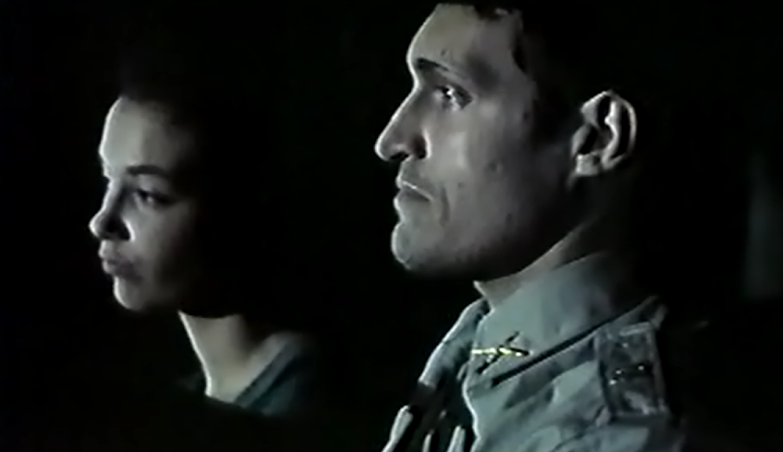
* No offense to Todd Solondz. Welcome to the Dollhouse is another all-time favorite of mine. I just feel like it influenced too many copycat, subpar American indie filmmakers.
** I know all the credit can't be placed on U.S. Go Home. In the same year, 1994, Claire also made I Can't Sleep, which is another early underappreciated film of hers that embodies her style as well
*** Kent Jones was also part of that entourage, but since he never called on me at a Q & A over 2 1/2 years ago at a screening of Denis' Beau Travail, with cinematographer Agnes Godard, I'm going to downplay his presence in this story.
RELATED ARTICLES
<<Previous Page 1 2 Next Page>>
home about contact us featured writings years in review film productions
All rights reserved The Pink Smoke © 2014